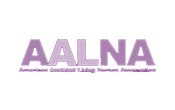
Abdominal Ultrasound Studies
Ultrasound of the Abdomen
An abdominal ultrasound is used to detect abnormalities of the abdominal organs (i.e. kidneys, liver, pancreas, gallbladder) such as gallstones or masses.
1. INDICATIONS
a. Evaluation of generalized or localized pain/tenderness
b. Evaluation for jaundice
c. Evaluation of abnormal liver function studies
d. Evaluation of known or suspected fluid collections or abscesses
e. Evaluation of known or suspected gallbladder or biliary tract disease
f. Evaluation of known or suspected pancreatic disease
g. Evaluation of palpable masses
h. Evaluation of fever of unknown origin
i. Evaluation of known or suspected hepatocellular disease
j. Evaluation of known or suspected primary or metastatic carcinoma
k. Evaluation of hepatomegaly/splenomegaly
l. Evaluation for post traumatic injury
2. PREPARATION
a. Patient NPO for 8 hours. Morning exams are preferred, especially for diabetic patients.
b. No gum chewing or smoking
c. Take needed medication with a small amount of water.
3. EXAM DESCRIPTION
This procedure involves a comprehensive look at the upper abdomen and a cursory look at the retroperitoneum. The patient is evaluated in the supine position as well as oblique and decubitus positions. Areas that are visualized – liver, gallbladder, biliary tree, kidneys, abdominal aorta, inferior vena cava, pancreas and spleen. Spectral Doppler and Color Flow Imaging may be utilized if warranted. Procedure time is approximately 30 – 45 minutes.
Ultrasound of the Abdomen Limited
1. INDICATIONS
a. Ascites check
b. Check for abscess
c. Evaluate superficial lump
2. PREPARATION
None
3. EXAM DESCRIPTION
a. If looking for ascites, scan the 4 quadrants of abdomen
b. If evaluating lump or abscess, scan the area of concerns
4. EXAM'S TECHNICAL INFORMATION
a. Verify written orders and approporiate indications
b. Limited abdominal ultrasound should include an extensive survey and representative image of the following areas. Survey and imaging should be done in multiple planes. Use a systematic approach (superior to inferior and left to right) to fully evaluate parenchyma and vascular structures.
When pathology is found: Measure in longitudinal and transverse planes, and use color Doppler.
Ultrasound of the Aorta
Abdominal Aorta—an ultrasound of the abdominal aorta is used to evaluate for and follow-up known abdominal aortic aneurysm (when the walls of the aorta become weak and reach over 3 centimeters in diameter, which could lead to rupture).
1. INDICATIONS
a. Known or suspected abdominal aortic aneurysm (AAA)
b. Atherosclerotic disease.
c. Family history of AAA.
2. PREPARATION
a. Nothing to eat or drink 8 hours prior to examination.
b. No chewing gum or smoking.
c. Take needed medications with a small amount of water.
3. EXAM DESCRIPTION
This procedure involves a detailed look at the abdominal aorta from the xiphoid process to the umbilicus including the bifurcation and proximal right and left iliac arteries. The patient is scanned in the supine position for the entire procedure. Procedure time is approximately 30 minutes
Ultrasound of the Kidney(s)-Renal
Renal—a renal ultrasound is used to detect abnormalities of the kidneys and urinary tract.
1. INDICATIONS
a. Renal calculi
b. Assess hydronephrosis
c. Hematuria
d. Flank pain
e. Proteinuria
f. Renal Insfuuiciency
2. PREPARATION
a. Drink 24 ounces of water 1 hour before
b. Come with full bladder.
c. Take medication as usual
3. EXAM DESCRIPTION
Transabdominal scanning on bilateral flanks and pelvic area. Images of bilateral kidneys and bladder to assess for any abnormalities. Post void images may be done. Exam time 20-30 minutes.
Ultrasound of the Pelvis and Bladder
Bladder—a bladder ultrasound is used to access the amount of urine in the bladder (pre and post-void volumes), look for stones, and to measure the thickness of the bladder wall, As well as to look for masses, cystitis, diverticulum, and neurogenic bladder.
Patient Preparation—Patient needs to have a full bladder to acquire the most diagnostic images. Patient is to drink 4-5 eight ounce glasses of water, 1 hour prior to examination without voiding. Patient will likely be asked to void halfway through the examination.
Pelvic—a pelvic ultrasound is used to find the cause of pelvic pain, and/or abnormal vaginal bleeding.
Patient Preparation—patient is expected to have a full bladder to acquire the most diagnostic images. Patient is to drink 4-5 eight ounce glasses of water, 1 hour prior to examination without voiding.
Ultrasound of the Scrotum
Scrotal—a scrotal ultrasound is used to further investigate pain in the testicles, and locate and identify the size of a mass.
1. INDICATIONS
a. Pain
b. Tenderness
c. Swelling
d. Palpable lump
2. PREPARATION
a. None
3. EXAM DESCRIPTION
Imaging done to measure and analyze the anatomical structures in the scrotum. Exam time 15-30 minutes.
Ultrasound of Small Parts
Thyroid—a thyroid ultrasound is used to evaluate the thyroid and detect abnormalities
Patient Preparation-Patient will be asked to lie in bed with his/her head extended backwards
Soft Tissue—this type of ultrasound is done to detect superficial abnormalities all over the body.
Patient Preparation—Preparation will depend on the area of the body being examined. It is likely that the patient will have to lie in bed.
Ultrasound and Pregnancy
Ultrasound is a key tool in checking a baby's health and development. It is safe for both mother and baby. Ultrasound can provide information about:
- Size and growth rate
- Position of the baby and placenta
- Movement, breathing and heart rate
- Amount of amniotic fluid (it can also assist with amniocentesis, a procedure in which a needle is used to remove amniotic fluid for further study)
Ultrasound can help detect:
- Multiple babies
- Certain birth defects and other conditions that could lead to problems during pregnancy or delivery
In addition to regular ultrasound exams, different types of ultrasound might be used at different stages of a pregnancy.
Ultrasound Services available in select areas only. Contact PPX to learn if this service is available in your area.














